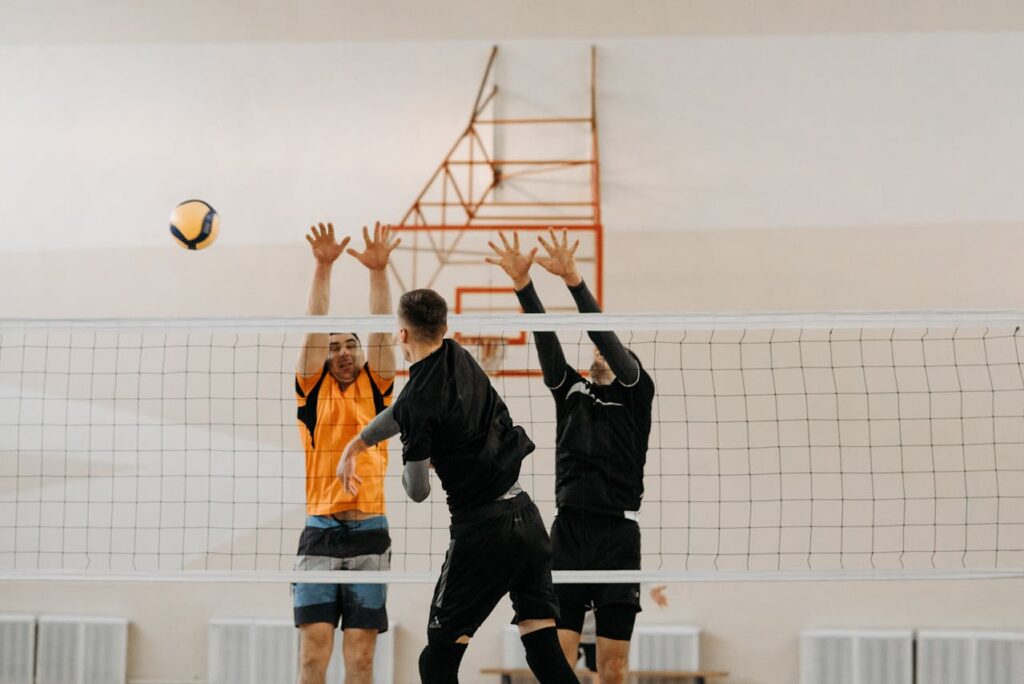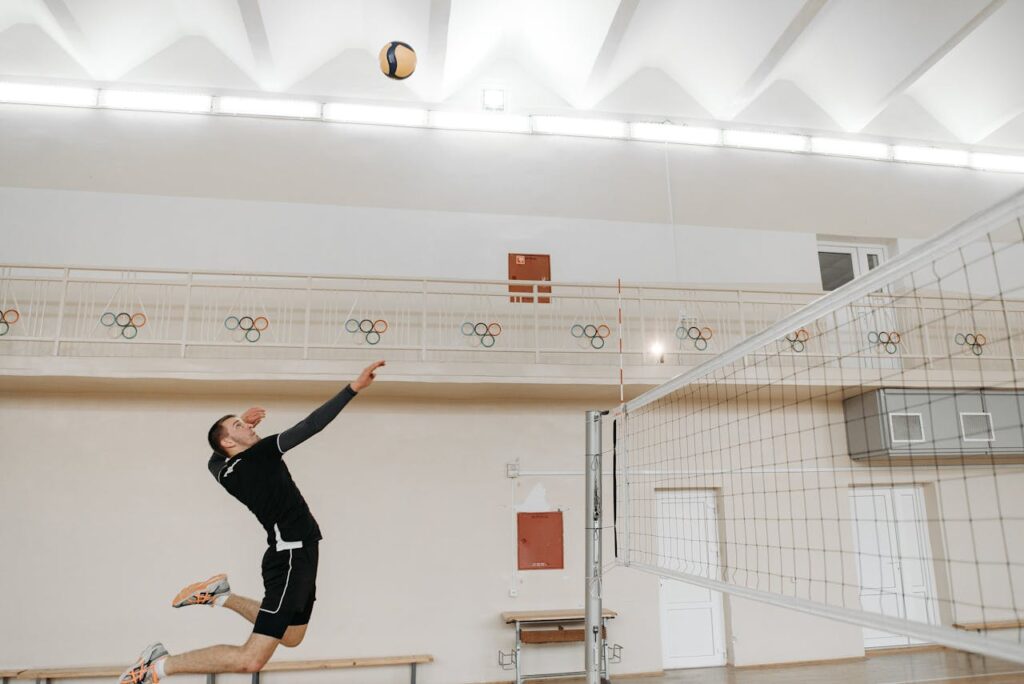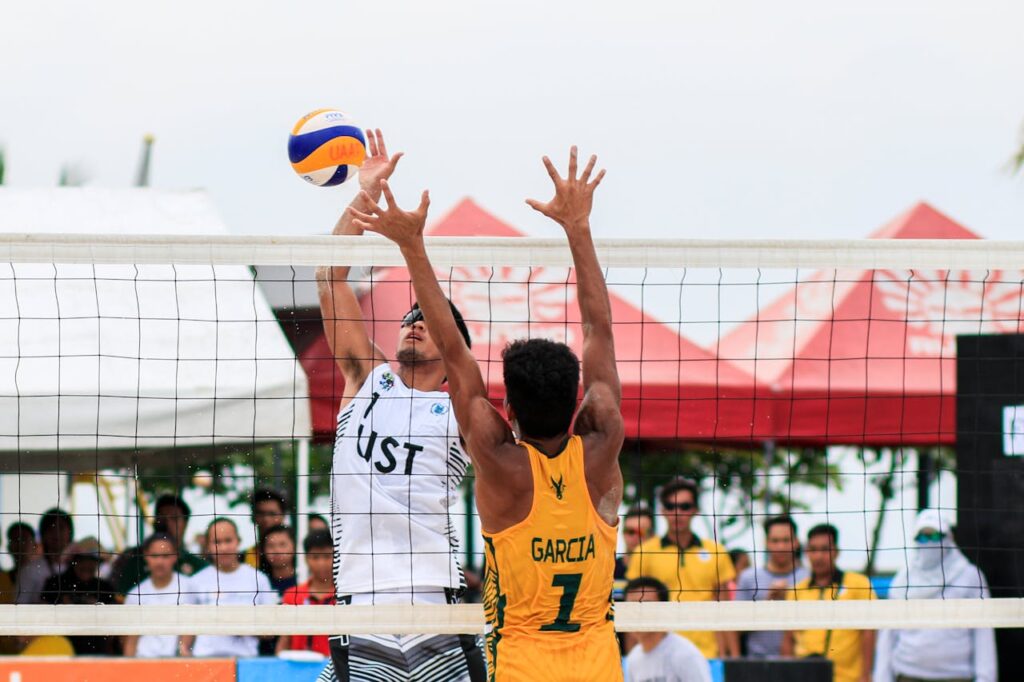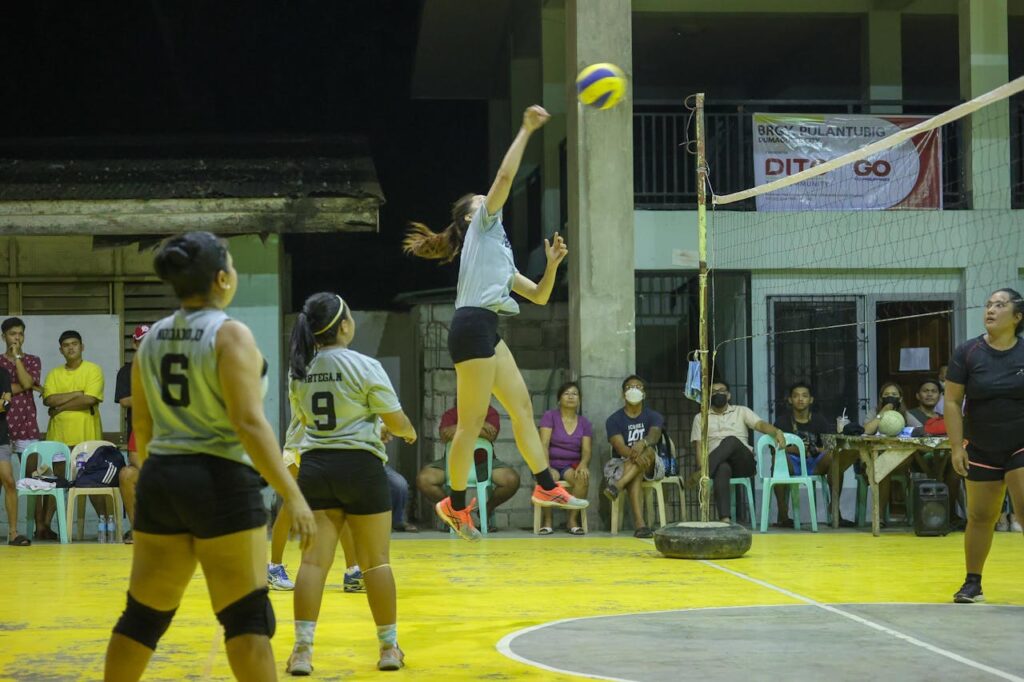A spike is one of the most exciting and powerful moves in volleyball. A spike occurs when a player hits the ball with force downward into the opponent’s court, aiming to score a point. This technique showcases an athlete’s strength, timing, and accuracy.

When executed correctly, a spike can leave the opposing team scrambling. Players often practice spiking to perfect their approach, jump, and hit. Mastering this skill can significantly elevate a player’s game and excite the crowd.
What is a Spike in Volleyball
A spike in volleyball is a powerful attack intended to score points. It occurs when a player jumps and hits the ball with force.
The goal is to send the ball to the opponent’s side. A successful spike can be exciting for players and fans alike!
Key Elements of a Spike in Volleyball:
- Approach: The player takes steps toward the ball to build speed.
- Jump: The player leaps high to reach the ball.
- Contact: The player hits the ball with an open hand.
- Follow-through: The player lands after the hit, ready for the next play.
Spikes can vary in style. Some common types include:
- Power Spike: A hard hit aimed at the floor.
- Tip: A gentle touch to place the ball over the block.
- Back-row Attack: A spike made from the back row of players.
A well-timed spike can catch the opposing team off guard. It requires practice and skill to execute properly.
The Importance of Spiking in Volleyball

Spiking is a key skill in volleyball that can shift the game’s momentum. It not only adds excitement but also plays a vital role in both offense and defense.
Strategic Advantage
A well-executed spike creates a strategic edge for the team. When a player spikes the ball, they aim to exploit gaps in the opposing team’s defense. By targeting weaker players or areas, they can score more points.
Excellent spikers can also draw defenders away from their positions. This allows teammates to find open spaces for attacks or other plays. The element of surprise is crucial. A sudden spike can catch opponents off guard, disrupting their planned defense.
Scoring Dynamics
Spiking is one of the most effective ways to score points in volleyball. When players successfully execute a spike, it often leads to immediate points. This puts pressure on the opposing team and can lead to quick shifts in the game.
The angle and speed of a spike also determine its success. A powerful, downward spike makes it hard for the defense to react in time. Players often practice different types of spikes to keep their opponents guessing. Knowing when and how to spike can change the outcome of a match dramatically.
Types of Volleyball Spikes

There are different types of spikes in volleyball, each serving a unique purpose during a match. Knowing these types helps players use them effectively to score points.
Power Spike
The power spike is one of the most exciting moves in volleyball. It involves a player jumping high and hitting the ball with maximum force.
To execute this spike well, the player needs strong timing and positioning. Timing is critical because the player must make contact with the ball at the peak of their jump. Positioning helps the player aim for gaps in the defense.
A power spike can often catch opponents off-guard. The ball travels fast and low, making it difficult to block. This can lead to quick points for the team.
Off-speed Spike
The off-speed spike is a clever technique that tricks the opposing team. Instead of hitting the ball hard, the player uses a controlled approach to reduce the speed of the hit.
This spike can catch defenders by surprise, as they expect a powerful hit. The player aims to find open spaces in the defense. By using a soft touch or changing the angle, they make it harder for defenders to react.
Off-speed spikes can be effective during tight matches, as they change the game’s pace. This technique can create opportunities for teammates as well.
Back-row Spike
The back-row spike is an exciting play that brings a unique challenge. Players in the back row can jump and hit the ball while attacking. This adds variety to the offense and keeps the opponents guessing.
To execute a successful back-row spike, a player needs good timing and body control. They must be careful not to cross the attack line, which would make the spike illegal.
Back-row spikes can surprise the front-row defenders. They often leave space open, allowing for powerful attacks from the back row. This sometimes leads to crucial points in close games.
Spike Rules and Regulations

Knowing the rules and regulations is crucial for playing volleyball correctly. Players must follow specific guidelines to ensure fair play and safety on the court. Here are some key points about the official rules and common fouls related to spiking.
Official Volleyball Rules
In volleyball, a spike is an attack hit from an elevated position over the net. Players must follow the official rules set by organizations like FIVB or USA Volleyball.
Key rules include:
- Attack Line: Players can only spike from behind the attack line when the ball is set. If they spike from in front, it’s considered a violation.
- Contact with the Ball: When spiking, the ball must be hit cleanly without carrying or lifting it.
- Foot Faults: Players must not step on or over the centerline during a spike.
- Net Violation: Contact with the net during an attack is against the rules.
Common Spiking Fouls
Spiking can lead to several common fouls that players should avoid. Knowing these can help improve gameplay and team performance.
Some common fouls include:
- Double Hit: Hitting the ball twice in one motion when spiking is not allowed.
- Lift: If the ball is carried or held during the spike, it results in a lift call.
- Block Fault: Players can only block after the attack from the opponent. Attempting to spike on the opponent’s side too early can lead to penalties.
- Back Row Attack: A back-row player cannot spike the ball above the net from in front of the attack line.



